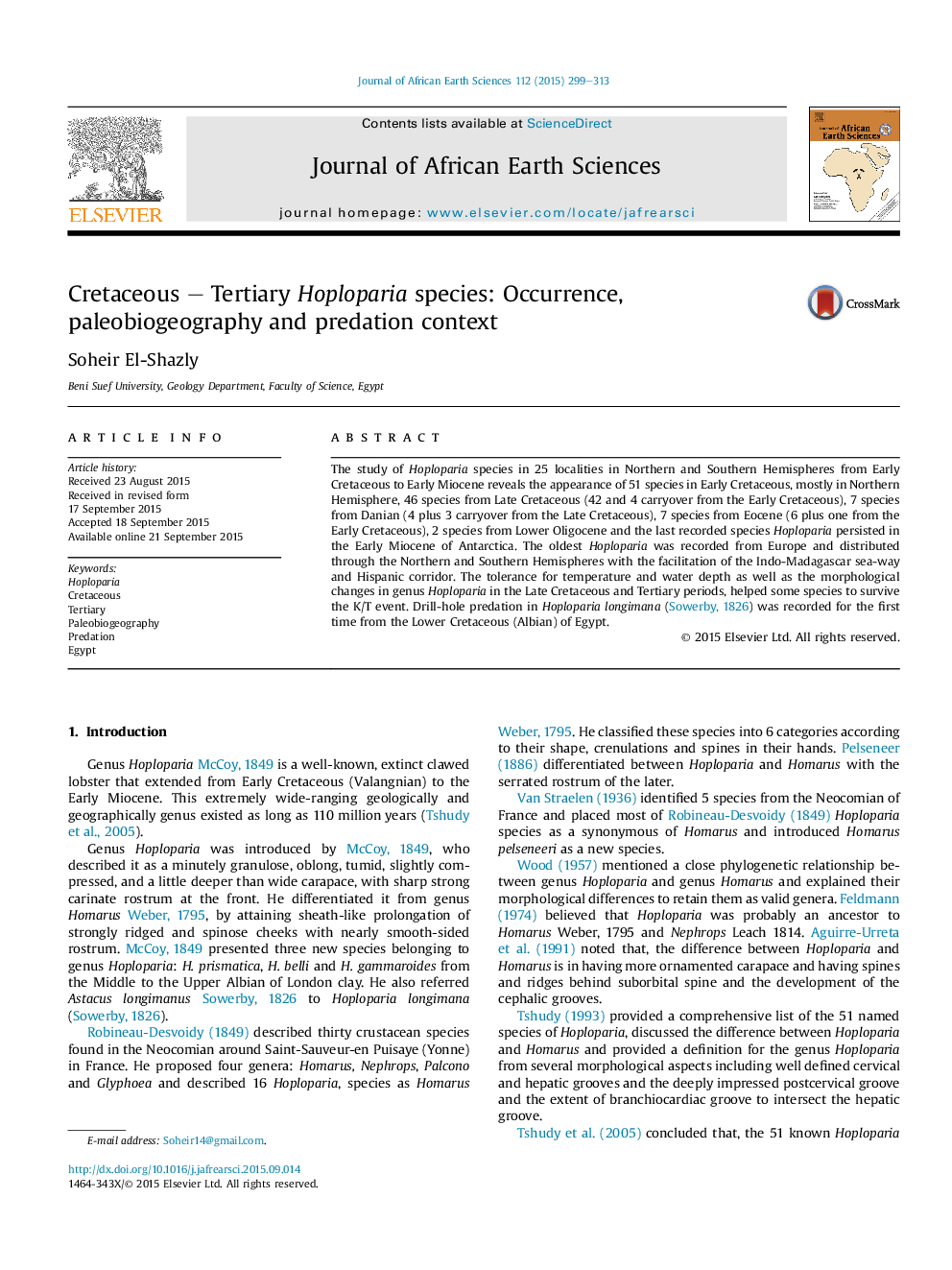| Article ID | Journal | Published Year | Pages | File Type |
|---|---|---|---|---|
| 4728386 | Journal of African Earth Sciences | 2015 | 15 Pages |
•106 Hoploparia species were recorded from 25 localities.•The species appeared in the Early Cretaceous and extinct in the Early Miocene.•Some species show tolerance for survival during K/T event.•Drill-hole predation is recorded in H. longimana from the Albian of Egypt.
The study of Hoploparia species in 25 localities in Northern and Southern Hemispheres from Early Cretaceous to Early Miocene reveals the appearance of 51 species in Early Cretaceous, mostly in Northern Hemisphere, 46 species from Late Cretaceous (42 and 4 carryover from the Early Cretaceous), 7 species from Danian (4 plus 3 carryover from the Late Cretaceous), 7 species from Eocene (6 plus one from the Early Cretaceous), 2 species from Lower Oligocene and the last recorded species Hoploparia persisted in the Early Miocene of Antarctica. The oldest Hoploparia was recorded from Europe and distributed through the Northern and Southern Hemispheres with the facilitation of the Indo-Madagascar sea-way and Hispanic corridor. The tolerance for temperature and water depth as well as the morphological changes in genus Hoploparia in the Late Cretaceous and Tertiary periods, helped some species to survive the K/T event. Drill-hole predation in Hoploparia longimana ( Sowerby, 1826) was recorded for the first time from the Lower Cretaceous (Albian) of Egypt.
